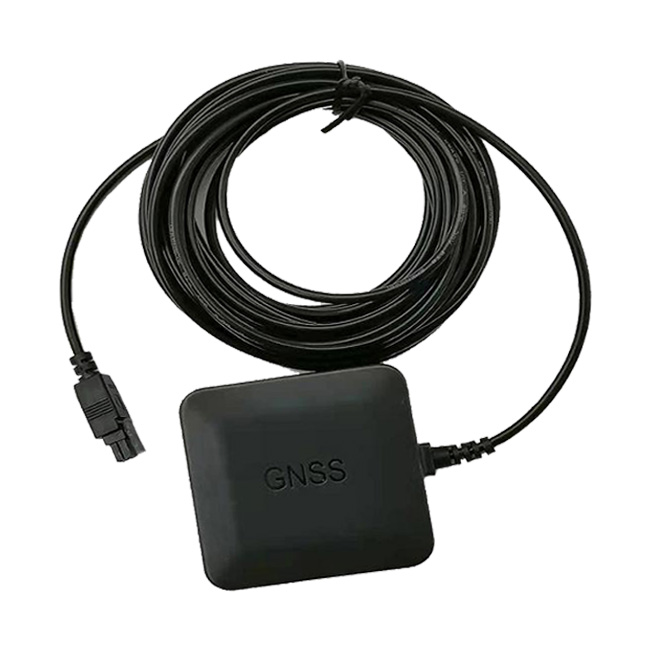High-precision positioning theory and application
From the mobile Internet to the Internet of Things, location is indispensable information, but from the viewpoint of fine industry application requirements, only higher-precision positioning information can bring higher value, so that people can more accurately understand the location of things and people ** where they are, and better manage enterprises, people or materials. For example, to ensure the personal safety of tunnel construction workers, to assist prisons in establishing a global visualization and supervision platform, to improve safety efficiency in the petrochemical industry, and to help upgrade the intelligent management of construction sites.
The above industries have high requirements for ultra-high positioning accuracy, large capacity, low latency, and high refresh rate of positioning solutions.
Positioning (Location) and navigation (Navigation) technologies are responsible for providing real-time information about the movement of a carrier (e.g., an autonomous vehicle), including the carrier's position, velocity, pose, acceleration, angular velocity, etc. Autonomous driving usually uses multi-sensor integrated localization. This paper mainly explains IMU application for autonomous driving localization.
The working principle of high-precision localization
The importance of localization cannot be overstated at the driverless car perception level. Driverless cars need to know their exact position relative to the environment, where the localization cannot be more than 10cm error.
GPS it can provide the vehicle with absolute positioning with meter-level accuracy and difference GPS or RTK GPS it can provide the vehicle with absolute positioning with centimeter-level accuracy, but not all road segments can be well-positioned at all times GPS Therefore, in the field of autonomous driving, RTK GPS outputs are generally associated with the IMU, the sensors of the car itself (e.g., wheel tachometers, steering wheel angle sensors, and other devices, etc.).
The full name of IMU is inertial measurement unit, inertial measurement unit usually consists of gyroscope, accelerometer and algorithm processing unit, by measuring the acceleration and rotation angle to obtain the motion trajectory of the autobody. We refer to conventional IMUs and systems combined with body and GPS information fusion algorithms as generalized autopilot IMUs.
The emergence of this technology makes up for this GPS Due to the lack of localization, the two complement each other, and self-driving cars can obtain the most accurate localization information. The most widely used method of positioning unmanned vehicles is the integration of Global Positioning System (GPS) Inertial Navigation System (INA) positioning method.
Combined navigation involves complex coordinate system transformations and requires initial calibration of the inertial navigation system. Generally with the help of a reference navigation system (e.g., GNSS) through the IMU or using a measuring instrument (inclinometer or dual-antenna high-precision GPS orienting system) to obtain the initial attitude angle (IMU compared to the local horizontal navigation coordinate system, the attitude angle of the carrier coordinate system is also known as the Eulerian angle), the initialization of the quaternion and the coordinate transformation matrix.
For the indoor positioning system, the customized local right-angle coordinate system (generally the corner of the positioning area is selected as the origin, the boundary line as the x-axis, the right-hand standard determines the y-axis, and the vertical plane is used as the z-axis) is used as the navigation coordinate system because both are right-angle coordinate systems, but the origin and direction of the coordinate systems are different, requiring origin displacement and axis rotation, so initial alignment is also required. After the initial alignment is finished, it enters the inertial guidance calculation process, reads the IMU angular velocity measurements to update the quaternion and attitude transformation matrix, then updates the velocity and position, and finally converts the velocity and position to other target coordinate system, such as GNSS latitude/longitude high earth coordinate system.
High-precision localization method
In order to meet the requirements of navigation and localization for autonomous driving, there are:
Inertial Navigation INS
Inertial measurement units are commonly used in automatic driving (IMU), which can be divided into two categories according to the accuracy: the first category is based on fiber optic gyro (FOG) IMU, which is characterized by high accuracy but high cost, and is generally used for map-collecting vehicles with high accuracy requirements. The second category is the IMU based on microelectromechanical system (MEMS) devices, which is characterized by small size, low cost, and high environmental adaptability, but has the disadvantage of large error. If they are applied to self-driving vehicles, more complex processing is required. In order to navigate the raw data output from IMU positioning, the positioning system requires Jetlink Inertial Navigation (SINS) solving including the following four modules:
1. Attitude information is obtained by integrating the angular velocity information output from the gyro.
2. The navigation coordinate system is obtained from the carrier coordinate system by converting the specific force output from the accelerometer through the attitude information.
3. Gravity calculation, harmful acceleration, Earth rotation angle velocity and other compensation calculations
4. velocity and position obtained by acceleration information integration
However, it should be noted that the output error caused by the integration process accumulates with the working time
Global Navigation Satellite System GNSS
GNSS is an absolute positioning scheme based on ranging and its output error does not vary with operating time and carrier motion. A distinctive feature of GNSS positioning is the shift from a single-frequency, single-system to a multi-frequency, multi-system, which greatly improves the reliability and availability of our navigation system. Another notable feature is precise positioning, which has been widely used in civil applications. In particular, the dynamic differential RTK technology based on carrier phase is applied in the fields of intelligent driving test, unmanned aerial vehicle, and precision agriculture. However, since GNSS navigation is based on satellite positioning, this greatly increases the influencing factors of positioning and the uncertainty of positioning results. Another vulnerability is reflected in signal interference. If the self-driving vehicle itself and the installed equipment lead to a poor electromagnetic environment of the vehicle.
High-precision maps and online laser lidar point cloud matching localization
Positioning systems can also achieve absolute positioning and high centimeter accuracy with pre-established high-precision maps and online laser point clouds. The limitation of this method is that it increases the dependence of the positioning system on high-precision maps.
Odometry
Autonomous driving has two ways of obtaining wheel information: external and internal.
External wheel-wheel sensors are characterized by high resolution and accuracy. The disadvantage is that the structure is complex and reliability is difficult to ensure, and it is generally more suitable for map collection vehicles. Built-in wheel sensors are characterized by the fact that they do not require external equipment. The disadvantage is low precision and large error. If used for self-driving vehicles, it requires multiple processing. Regardless of the method used, wheeled sensors are very important to the localization system.
Motion constraints incorporating vehicle motion characteristics
In extreme cases, the positioning results of self-driving vehicles do not produce large errors.
Application to Driverless
Different methods of autonomous driving localization involve different sensors. Therefore, autonomous driving usually uses multi-sensor integrated localization. Multi-sensor integrated localization generally includes the following parts:
- Data preprocessing: including inertial navigation solving, quality control of GNSS LiDAR data, error compensation, wheel-based sensor computation, online estimation and compensation.
- Matching localization is based on LiDAR data and high-precision maps.
- Four core modules:
1. ZUPT/ZIHR/NHC, vehicle motion constraint component
2. INS Alignment, the initial alignment part of inertial navigation
3. Integrated, the combination part
4. FDI, fault detection and isolation section
- Safety related module: monitors the integrity of all outputs.
Currently commonly used navigation and positioning optimization methods are still based on the traditional Kalman filter (Kal ** n Filter), whose optimization index is to minimize the state variance. Kalman filter model Kalman filter model, the first step is to select the state variables. Currently, state estimation is mainly based on navigation parameter errors and on-board sensor errors. Then, the state equations can be advanced in the time domain by one-step prediction and measurement updating. In addition, fault diagnosis and isolation of the positioning system has many traditional software methods, such as cardinality detection, which on the other hand can be realized by hardware redundancy. For example, equipped with multiple GNSS/IMUs, together with software resolution margins, the positioning system can realize multi-sensor redundancy and improve reliability.
Industry
According to different usage scenarios, from cell phone positioning, sports watch step recording to self-driving car high precision positioning IMU accuracy requirements are different, and high accuracy also means high cost. IMUs with higher accuracy will be used in missiles or airplanes. IMU To achieve higher accuracy, many manufacturers add magnetometers to the three accelerometers and three gyroscopes. Some also increase the number of sensors to improve reliability.

Ltd. specializes in high-precision GNSS modules and wireless communication products, technology development and application promotion service providers, relying on the wireless communication technology in the field of R & D and promotion of experience, JUNODA set up a team with a wealth of experience in hardware and software development technology, aimed at domestic and foreign OEM / ODM customers and system integrators to provide high-quality, high-performance wireless modules and applications! We aim to provide high-quality, high-performance wireless modules and application programs to OEM/ODM customers and system integrators at home and abroad, and create long-term value for customers!
The company mainly provides integrated antenna module, dual-frequency high-precision module, single-frequency high-precision module, thousand-seeking high-precision module, Zhongke micro-positioning module, U-BLOX positioning module, SICOM communication module, inertial navigation DR module, UWM GNSS module, RTK differential module, 4G communication module and high-precision antenna, etc., the products are sold well in Beijing, Shanghai, Shenzhen, Guangdong, Jiangsu, Zhejiang, Sichuan, Hunan and other parts of the country. Our GNSS modules are widely used in many application fields, such as drones, vehicle security monitoring and dispatching, automatic bus stop announcement, DVR, car DVD navigation, GPS electronic dog, synchronized timing, high-altitude balloon monitoring, engineering machinery, industrial automation, etc. In the field of wireless communication products, the company is closely involved in the field of wireless communication, such as RTK differential module, 4G communication module and high-precision antenna.
In the field of wireless communication products, the company follows the latest development of international communication technology, introduces and acts as an agent for wireless communication modules that meet the market demand, and the products have a comprehensive layout from 2G, 3G, 4G, and are widely used in financial electronic payment, vehicle remote control, remote advertising information, repeater monitoring, mobile Internet terminals, smart home, remote medical care, network testing, enterprise information management, anti-theft alarm, Remote video transmission, intelligent meter reading, mobile computing, network navigation, voice phone, wireless gateway and other fields. Focused areas include video surveillance, network optimization, routers, POS and other M2M industry applications.
If you need to consult, please contact online customer service!














